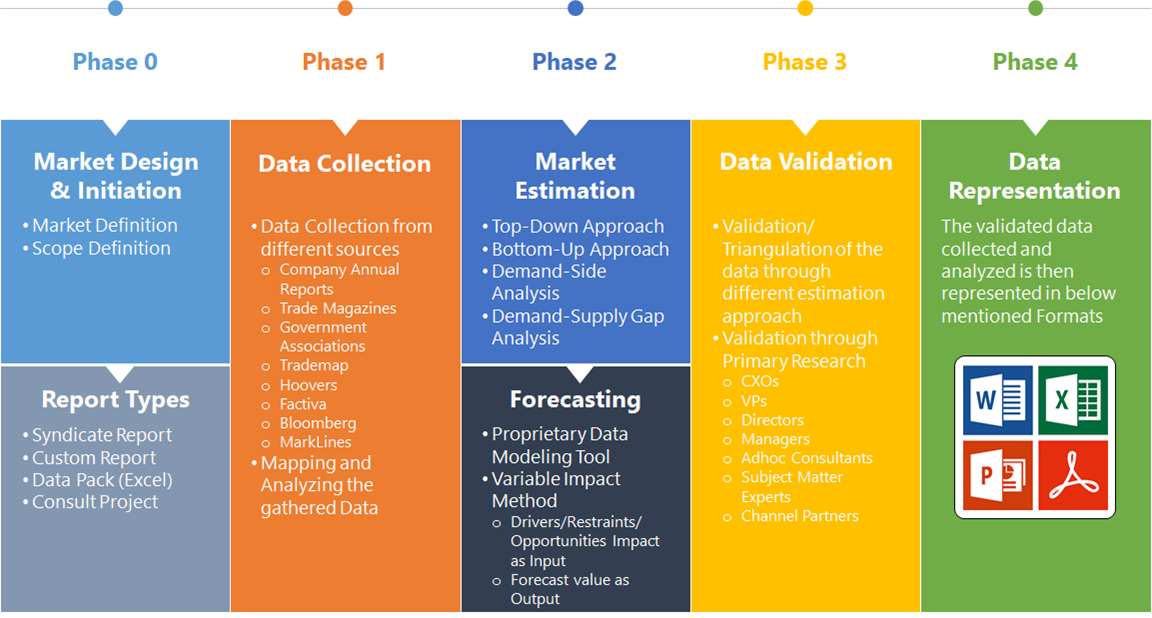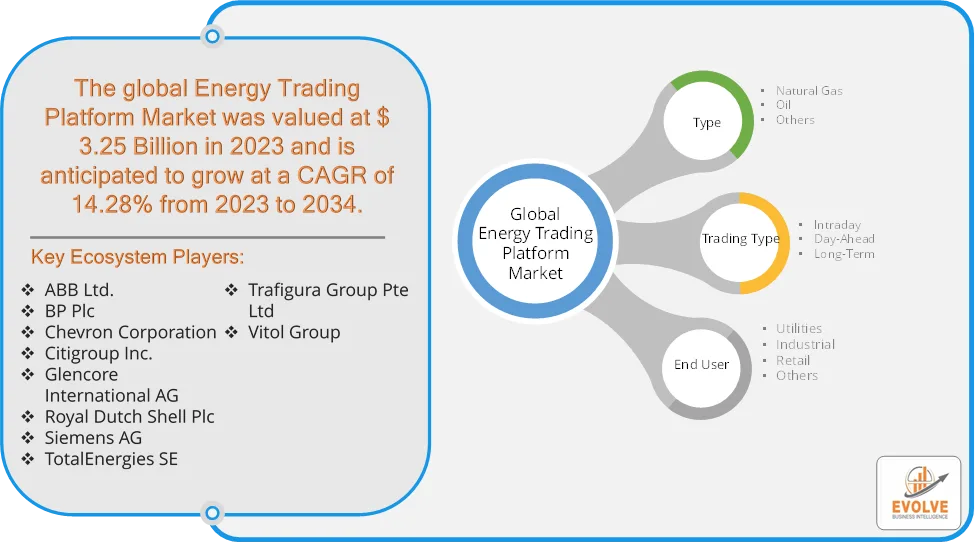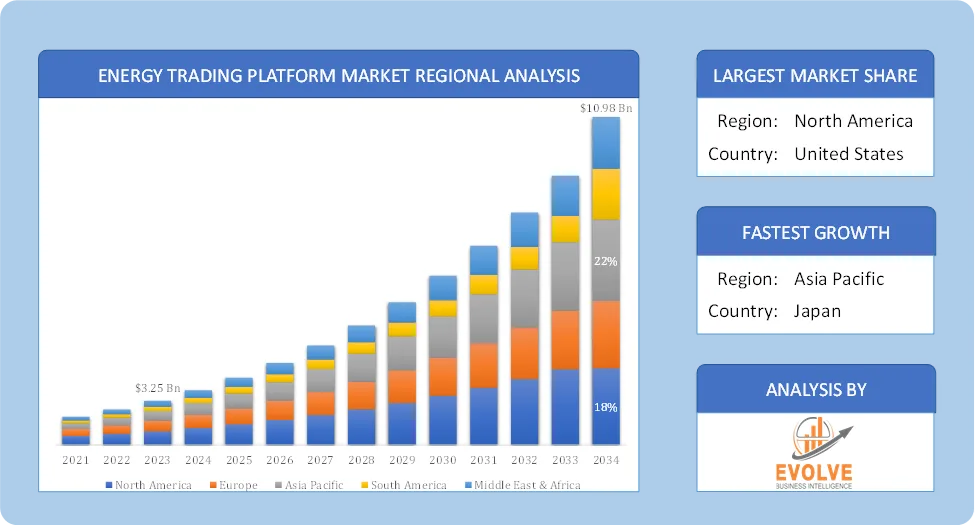Energy Trading Platform Market Analysis and Global Forecast 2024-2034
$ 1,390.00 – $ 5,520.00Price range: $ 1,390.00 through $ 5,520.00
Energy Trading Platform Market Research Report: Information By Type (Power, Natural Gas, Oil, Others), by Trading Type (Intraday, Day-Ahead, Long-Term), by End-User (Utilities, Industrial, Retail, Others), and by Region — Forecast till 2034
Page: 165
Energy Trading Platform Market Overview
The Energy Trading Platform Market size accounted for USD 3.25 Billion in 2023 and is estimated to account for 4.20 Billion in 2024. The Market is expected to reach USD 10.98 Billion by 2034 growing at a compound annual growth rate (CAGR) of 14.28% from 2024 to 2034. The Energy Trading Platform Market is experiencing significant growth and transformation, driven by technological advancements, the increasing integration of renewable energy sources, and evolving energy market dynamics. These platforms facilitate the trading of energy commodities such as electricity, oil, gas, and renewable energy certificates, enabling stakeholders to optimize their trading strategies, enhance market liquidity, and streamline the execution of energy contracts.
The energy trading platform market is a dynamic and rapidly evolving sector. It is crucial for modern energy markets, enabling efficient trading, better integration of renewables, and enhanced grid stability.
Global Energy Trading Platform Market Synopsis
 Energy Trading Platform Market Dynamics
Energy Trading Platform Market Dynamics
The major factors that have impacted the growth of Energy Trading Platform Market are as follows:
Drivers:
Ø Growing Adoption of Renewable Energy
The increasing penetration of solar, wind, and hydro power has led to a more decentralized and volatile energy market. Energy trading platforms help balance supply and demand by enabling real-time trading of renewable energy. Governments are introducing renewable energy certificates (RECs), which require efficient trading mechanisms. AI-driven predictive analytics enhance decision-making by analyzing price trends and optimizing trading strategies. Blockchain technology improves transparency, security, and efficiency in energy transactions and Cloud-based trading platforms offer scalability, flexibility, and real-time access to market data.
Restraint:
- High Initial Investment & Implementation Costs
Deploying an advanced energy trading platform requires significant capital investment in software, infrastructure, and personnel training. Small and medium-sized enterprises (SMEs) may find it cost-prohibitive to implement sophisticated trading solutions. Energy trading platforms handle sensitive financial and operational data, making them prime targets for cyberattacks and Blockchain-based energy trading solutions are still evolving and face security concerns related to fraud and hacking.
Opportunity:
⮚ Rise of Renewable Energy & Carbon Credit Trading
The increasing adoption of solar, wind, and hydro energy creates demand for efficient energy trading platforms to manage decentralized power generation. The expansion of carbon credit markets and cap-and-trade programs presents opportunities for platforms that facilitate carbon credit trading and emissions reduction compliance. AI-driven platforms can optimize energy trading strategies through predictive analytics, demand forecasting, and automated trading and Machine learning algorithms enhance risk management by identifying market trends and price fluctuations in real time.
Energy Trading Platform Market Segment Overview
Based on Type, the market is segmented based on Power, Natural Gas, Oil, Others. The Oil segment dominant the market. Crude oil continues to be one of the most traded commodities globally, driven by its crucial role in the global energy mix. The significant demand for crude oil in various sectors like transportation, industrial production, and power generation, coupled with its influence on global economic activity, contributes to its dominant position in the market.
By Trading Type
Based on Trading Type, the market segment has been divided into Intraday, Day-Ahead, Long-Term. Long-Term trading segment dominant the market. Long-term trading is particularly popular due to its stability and predictability, making it a preferred choice for large-scale energy producers, utilities, and institutional investors. The long-term contracts, often spanning months or years, allow market participants to lock in prices and secure energy supply with minimal risk, which is crucial for both buyers and sellers in volatile energy markets.
By End User
Based on Application, the market segment has been divided into Utilities, Industrial, Retail, Others. Utilities held a dominant the market. Utilities are the backbone of the energy sector, responsible for the production, transmission, and distribution of electricity, gas, and other energy resources. As major players in the energy trading market, utilities use trading platforms to manage supply and demand, balance energy costs, and ensure grid stability.
Global Energy Trading Platform Market Regional Analysis
Based on region, the global Energy Trading Platform Market has been divided into North America, Europe, Asia-Pacific, the Middle East & Africa, and Latin America. North America is projected to dominate the use of the Energy Trading Platform Market followed by the Asia-Pacific and Europe regions.
 North America Energy Trading Platform Market
North America Energy Trading Platform Market
North America holds a dominant position in the Energy Trading Platform Market. This dominance is primarily attributed to the region’s mature and well-established energy markets, high adoption rates of advanced technologies, and stringent environmental regulations. The U.S. leads with a well-established power market structure and advanced energy trading software adoption and renewable energy trading is growing, with increasing investments in carbon credits and green energy certificates.
Asia-Pacific Energy Trading Platform Market
The Asia-Pacific region has indeed emerged as the fastest-growing market for the Energy Trading Platform Market industry. Rapid Industrialization and Urbanization: Growing energy demand from rapidly industrializing and urbanizing economies like China and India is a major driver. The deployment of smart grids to improve grid efficiency and integrate renewable energy sources drives the need for advanced trading platforms. Peer-to-peer (P2P) energy trading is gaining traction, especially in Japan and Australia.
Competitive Landscape
The global Energy Trading Platform Market is highly competitive, with numerous players offering a wide range of software solutions. The competitive landscape is characterized by the presence of established companies, as well as emerging startups and niche players. To increase their market position and attract a wide consumer base, the businesses are employing various strategies, such as product launches, and strategic alliances.
Prominent Players:
- ABB Ltd.
- BP Plc
- Chevron Corporation
- Citigroup Inc.
- Glencore International AG
- Royal Dutch Shell Plc
- Siemens AG
- TotalEnergies SE
- Trafigura Group Pte Ltd
- Vitol Group.
Scope of the Report
Global Energy Trading Platform Market, by Type
- Power
- Natural Gas
- Oil
- Others
Global Energy Trading Platform Market, by Trading Type
- Intraday
- Day-Ahead
- Long-Term
Global Energy Trading Platform Market, by End User
- Utilities
- Industrial
- Retail
- Others
Global Energy Trading Platform Market, by Region
- North America
- US
- Canada
- Mexico
- Europe
- UK
- Germany
- France
- Italy
- Spain
- Benelux
- Nordic
- Rest of Europe
- Asia Pacific
- China
- Japan
- South Korea
- Indonesia
- Austalia
- Malaysia
- India
- Rest of Asia Pacific
- South America
- Brazil
- Argentina
- Rest of South America
- Middle East & Africa
- Saudi Arabia
- UAE
- Egypt
- South Africa
- Rest of Middle East & Africa
| Parameters | Indicators |
|---|---|
| Market Size | 2034: USD 10.98 Billion |
| CAGR (2024-2034) | 14.28% |
| Base year | 2022 |
| Forecast Period | 2024-2034 |
| Historical Data | 2021 (2017 to 2020 On Demand) |
| Report Coverage | Revenue Forecast, Competitive Landscape, Growth Factors, and Trends |
| Key Segmentations | Type, Trading Type, End User |
| Geographies Covered | North America, Europe, Asia-Pacific, South America, Middle East, Africa |
| Key Vendors | ABB Ltd., BP Plc, Chevron Corporation, Citigroup Inc., Glencore International AG, Royal Dutch Shell Plc, Siemens AG, TotalEnergies SE, Trafigura Group Pte Ltd and Vitol Group. |
| Key Market Opportunities | · Rise of Renewable Energy & Carbon Credit Trading
· AI & Predictive Analytics for Smarter Trading |
| Key Market Drivers | · Growing Adoption of Renewable Energy
· Advancements in Technology |
REPORT CONTENT BRIEF:
- High-level analysis of the current and future Energy Trading Platform Market trends and opportunities
- Detailed analysis of current market drivers, restraining factors, and opportunities in the future
- Energy Trading Platform Market historical market size for the year 2021, and forecast from 2023 to 2033
- Energy Trading Platform Market share analysis at each product level
- Competitor analysis with detailed insight into its product segment, Government & Defense strength, and strategies adopted.
- Identifies key strategies adopted including product launches and developments, mergers and acquisitions, joint ventures, collaborations, and partnerships as well as funding taken and investment done, among others.
- To identify and understand the various factors involved in the global Energy Trading Platform Market affected by the pandemic
- To provide a detailed insight into the major companies operating in the market. The profiling will include the Government & Defense health of the company’s past 2-3 years with segmental and regional revenue breakup, product offering, recent developments, SWOT analysis, and key strategies.
Frequently Asked Questions (FAQ)
What is the study period of this market?
The study period of the global Energy Trading Platform Market is 2021- 2033
What is the growth rate of the global Energy Trading Platform Market?
The global Energy Trading Platform Market is growing at a CAGR of 14.28% over the next 10 years
Which region has the highest growth rate in the market of Energy Trading Platform Market?
Asia Pacific is expected to register the highest CAGR during 2024-2034
Which region has the largest share of the global Energy Trading Platform Market?
North America holds the largest share in 2022
Who are the key players in the global Energy Trading Platform Market?
ABB Ltd., BP Plc, Chevron Corporation, Citigroup Inc., Glencore International AG, Royal Dutch Shell Plc, Siemens AG, TotalEnergies SE, Trafigura Group Pte Ltd and Vitol Group. are the major companies operating in the market.
Do you offer Post Sale Support?
Yes, we offer 16 hours of analyst support to solve the queries
Do you sell particular sections of a report?
Yes, we provide regional as well as country-level reports. Other than this we also provide a sectional report. Please get in contact with our sales representatives.
Press Release

Global Pharmaceutical Manufacturing Market to Reach $1.38 Trillion by 2035 with 7.35% CAGR, New Research Shows

The Global Mammography Market Is Estimated To Record a CAGR of Around 10.29% During The Forecast Period

Glue Stick Market to Reach USD 2.35 Billion by 2034

Podiatry Service Market to Reach USD 11.88 Billion by 2034

Microfluidics Technology Market to Reach USD 32.58 Billion by 2034

Ferric Chloride Market to Reach USD 10.65 Billion by 2034

Family Practice EMR Software Market to Reach USD 21.52 Billion by 2034

Electric Hairbrush Market to Reach USD 15.95 Billion by 2034

Daily Bamboo Products Market to Reach USD 143.52 Billion by 2034

Cross-border E-commerce Logistics Market to Reach USD 112.65 Billion by 2034
Table of Content
CHAPTER 1. Executive Summary
CHAPTER 2. Scope of the Study
2.1. Market Definition
2.2. Market Scope & Segmentation
2.2.1. Objective of Report
CHAPTER 3. Evolve BI Methodology
3.1. Data Collection & Validation Approach
3.2. Market Size Estimation and Forecast
CHAPTER 4. Exclusive Analysis
4.1. Market Opportunity Score
4.1.1. Type Segement – Market Opportunity Score
4.1.2. Trading Type Segment – Market Opportunity Score
4.1.3. End User Segment – Market Opportunity Score
4.2. Key Market Influencing Indicators
CHAPTER 5. Market Insights and Trends
5.1. Value Chain Analysis
5.1.1. Raw Material
5.1.2. Manufacturing Process
5.1.3. Distribution Channel
5.1.4. End User
5.2. Porter’s Five Forces Analysis
5.2.1. Bargaining Power of Buyers
5.2.2. Bargaining Power of Suppliers
5.2.3. Threat of New Entrant
5.2.4. Threat of Substitute
5.2.5. Industry Rivalry
5.3. COVID-19 Impact and Post COVID Scenario on Energy Trading Platform Market
5.3.1. Impact of COVID-19
5.3.2. Government Support and Industry Revival Policies
5.3.3. Measures Taken by Companies to Mitigate Negative Impact
5.3.4. Post COVID Trend
CHAPTER 6. Market Dynamics
6.1. Introduction
6.2. Drivers
6.2.1. Driver 1
6.2.2. Driver 2
6.2.3. Driver 3
6.3. Restraints
6.3.1. Restraint 1
6.3.2. Restraint 2
6.4. Opportunity
6.4.1. Opportunity 1
CHAPTER 7. Energy Trading Platform Market, By Type
7.1. Introduction
7.1.1. Power
7.1.2 Natural Gas
7.1.3. Oil
7.1.4. Others
CHAPTER 8 Energy Trading Platform Market, By Trading Type
8.1. Introduction
8.1.1. Intraday
8.1.2. Day-Ahead
8.1.3. Long-Term
CHAPTER 9. Energy Trading Platform Market, By End User
9.1. Introduction
9.1.1. Utilities
9.1.2. Industrial
9.1.3. Retail
9.1.4. Others
CHAPTER 10. Energy Trading Platform Market, By Region
10.1. Introduction
10.2. NORTH AMERICA
10.2.1. North America: Market Size and Forecast, By Country, 2024 – 2034($ Million)
10.2.2. North America: Market Size and Forecast, By Type, 2024 – 2034($ Million)
10.2.3. North America: Market Size and Forecast, By Trading Type, 2024 – 2034($ Million)
10.2.4. North America: Market Size and Forecast, By End User, 2024 – 2034($ Million)
10.2.5. US
10.2.5.1. US: Market Size and Forecast, By Type, 2024 – 2034($ Million)
10.2.5.2. US: Market Size and Forecast, By Trading Type, 2024 – 2034($ Million)
10.2.5.3. US: Market Size and Forecast, By End User, 2024 – 2034($ Million)
10.2.6. CANADA
10.2.6.1. Canada: Market Size and Forecast, By Type, 2024 – 2034($ Million)
10.2.6.2. Canada: Market Size and Forecast, By Trading Type, 2024 – 2034($ Million)
10.2.6.3. Canada: Market Size and Forecast, By End User, 2024 – 2034($ Million)
10.2.7. MEXICO
10.2.7.1. Mexico: Market Size and Forecast, By Type, 2024 – 2034($ Million)
10.2.7.2. Mexico: Market Size and Forecast, By Trading Type, 2024 – 2034($ Million)
10.2.7.3. Mexico: Market Size and Forecast, By End User, 2024 – 2034($ Million)
10.3. Europe
10.3.1. Europe: Market Size and Forecast, By Country, 2024 – 2034($ Million)
10.3.2. Europe: Market Size and Forecast, By Type, 2024 – 2034($ Million)
10.3.3. Europe: Market Size and Forecast, By Trading Type, 2024 – 2034($ Million)
10.3.4. Europe: Market Size and Forecast, By End User, 2024 – 2034($ Million)
10.3.5. U.K.
10.3.5.1. U.K.: Market Size and Forecast, By Type, 2024 – 2034($ Million)
10.3.5.2. U.K.: Market Size and Forecast, By Trading Type, 2024 – 2034($ Million)
10.3.5.3. U.K.: Market Size and Forecast, By End User, 2024 – 2034($ Million)
10.3.6. GERMANY
10.3.6.1. Germany: Market Size and Forecast, By Type, 2024 – 2034($ Million)
10.3.6.2. Germany: Market Size and Forecast, By Trading Type, 2024 – 2034($ Million)
10.3.6.3. Germany: Market Size and Forecast, By End User, 2024 – 2034($ Million)
10.3.7. FRANCE
10.3.7.1. France: Market Size and Forecast, By Type, 2024 – 2034($ Million)
10.3.7.2. France: Market Size and Forecast, By Trading Type, 2024 – 2034($ Million)
10.3.7.3. France: Market Size and Forecast, By End User, 2024 – 2034($ Million)
10.3.8. ITALY
10.3.8.1. Italy: Market Size and Forecast, By Type, 2024 – 2034($ Million)
10.3.8.2. Italy: Market Size and Forecast, By Trading Type, 2024 – 2034($ Million)
10.3.8.3. Italy: Market Size and Forecast, By End User, 2024 – 2034($ Million)
10.3.9. SPAIN
10.3.9.1. Spain: Market Size and Forecast, By Type, 2024 – 2034($ Million)
10.3.9.2. Spain: Market Size and Forecast, By Trading Type, 2024 – 2034($ Million)
10.3.9.3. Spain: Market Size and Forecast, By End User, 2024 – 2034($ Million)
10.3.10. BENELUX
10.3.10.1. BeNeLux: Market Size and Forecast, By Type, 2024 – 2034($ Million)
10.3.10.2. BeNeLux: Market Size and Forecast, By Trading Type, 2024 – 2034($ Million)
10.3.10.3. BeNeLux: Market Size and Forecast, By End User, 2024 – 2034($ Million)
10.3.11. RUSSIA
10.3.11.1. Russia: Market Size and Forecast, By Type, 2024 – 2034($ Million)
10.3.11.2. Russia: Market Size and Forecast, By Trading Type, 2024 – 2034($ Million)
10.3.11.3. Russia: Market Size and Forecast, By End User, 2024 – 2034($ Million)
10.3.12. REST OF EUROPE
10.3.12.1. Rest of Europe: Market Size and Forecast, By Type, 2024 – 2034($ Million)
10.3.12.2. Rest of Europe: Market Size and Forecast, By Trading Type, 2024 – 2034($ Million)
10.3.12.3. Rest of Europe: Market Size and Forecast, By End User, 2024 – 2034($ Million)
10.4. Asia Pacific
10.4.1. Asia Pacific: Market Size and Forecast, By Country, 2024 – 2034($ Million)
10.4.2. Asia Pacific: Market Size and Forecast, By Type, 2024 – 2034($ Million)
10.4.3. Asia Pacific: Market Size and Forecast, By Trading Type, 2024 – 2034($ Million)
10.4.4. Asia Pacific: Market Size and Forecast, By End User, 2024 – 2034($ Million)
10.4.5. CHINA
10.4.5.1. China: Market Size and Forecast, By Type, 2024 – 2034($ Million)
10.4.5.2. China: Market Size and Forecast, By Trading Type, 2024 – 2034($ Million)
10.4.5.3. China: Market Size and Forecast, By End User, 2024 – 2034($ Million)
10.4.6. JAPAN
10.4.6.1. Japan: Market Size and Forecast, By Type, 2024 – 2034($ Million)
10.4.6.2. Japan: Market Size and Forecast, By Trading Type, 2024 – 2034($ Million)
10.4.6.3. Japan: Market Size and Forecast, By End User, 2024 – 2034($ Million)
10.4.7. INDIA
10.4.7.1. India: Market Size and Forecast, By Type, 2024 – 2034($ Million)
10.4.7.2. India: Market Size and Forecast, By Trading Type, 2024 – 2034($ Million)
10.4.7.3. India: Market Size and Forecast, By End User, 2024 – 2034($ Million)
10.4.8. SOUTH KOREA
10.4.8.1. South Korea: Market Size and Forecast, By Type, 2024 – 2034($ Million)
10.4.8.2. South Korea: Market Size and Forecast, By Trading Type, 2024 – 2034($ Million)
10.4.8.3. South Korea: Market Size and Forecast, By End User, 2024 – 2034($ Million)
10.4.9. THAILAND
10.4.9.1. Thailand: Market Size and Forecast, By Type, 2024 – 2034($ Million)
10.4.9.2. Thailand: Market Size and Forecast, By Trading Type, 2024 – 2034($ Million)
10.4.9.3. Thailand: Market Size and Forecast, By End User, 2024 – 2034($ Million)
10.4.10. INDONESIA
10.4.10.1. Indonesia: Market Size and Forecast, By Type, 2024 – 2034($ Million)
10.4.10.2. Indonesia: Market Size and Forecast, By Trading Type, 2024 – 2034($ Million)
10.4.10.3. Indonesia: Market Size and Forecast, By End User, 2024 – 2034($ Million)
10.4.11. MALAYSIA
10.4.11.1. Malaysia: Market Size and Forecast, By Type, 2024 – 2034($ Million)
10.4.11.2. Malaysia: Market Size and Forecast, By Trading Type, 2024 – 2034($ Million)
10.4.11.3. Malaysia: Market Size and Forecast, By End User, 2024 – 2034($ Million)
10.4.12. AUSTRALIA
10.4.12.1. Australia: Market Size and Forecast, By Type, 2024 – 2034($ Million)
10.4.12.2. Australia: Market Size and Forecast, By Trading Type, 2024 – 2034($ Million)
10.4.12.3. Australia: Market Size and Forecast, By End User, 2024 – 2034($ Million)
10.4.13. REST FO ASIA PACIFIC
10.4.13.1. Rest fo Asia Pacific: Market Size and Forecast, By Type, 2024 – 2034($ Million)
10.4.13.2. Rest fo Asia Pacific: Market Size and Forecast, By Trading Type, 2024 – 2034($ Million)
10.4.13.3. Rest fo Asia Pacific: Market Size and Forecast, By End User, 2024 – 2034($ Million)
10.5. South America
10.5.1. South America: Market Size and Forecast, By Country, 2024 – 2034($ Million)
10.5.2. South America: Market Size and Forecast, By Type, 2024 – 2034($ Million)
10.5.3. South America: Market Size and Forecast, By System, 2024 – 2034($ Million)
10.5.4. South America: Market Size and Forecast, By End User, 2024 – 2034($ Million)
10.5.5. BRAZIL
10.5.5.1. Brazil: Market Size and Forecast, By Type, 2024 – 2034($ Million)
10.5.5.2. Brazil: Market Size and Forecast, By Trading Type, 2024 – 2034($ Million)
10.5.5.3. Brazil: Market Size and Forecast, By End User, 2024 – 2034($ Million)
10.5.6. ARGENTINA
10.5.6.1. Argentina: Market Size and Forecast, By Type, 2024 – 2034($ Million)
10.5.6.2. Argentina: Market Size and Forecast, By Trading Type, 2024 – 2034($ Million)
10.5.6.3. Argentina: Market Size and Forecast, By End User, 2024 – 2034($ Million)
10.5.7. REST OF SOUTH AMERICA
10.5.7.1. Rest of South America: Market Size and Forecast, By Type, 2024 – 2034($ Million)
10.5.7.2. Rest of South America: Market Size and Forecast, By Trading Type, 2024 – 2034($ Million)
10.5.7.3. Rest of South America: Market Size and Forecast, By End User, 2024 – 2034($ Million)
10.6. Middle East & Africa
10.6.1. Middle East & Africa: Market Size and Forecast, By Country, 2024 – 2034($ Million)
10.6.2. Middle East & Africa: Market Size and Forecast, By Type, 2024 – 2034($ Million)
10.6.3. Middle East & Africa: Market Size and Forecast, By Trading Type, 2024 – 2034($ Million)
10.6.4. Middle East & Africa: Market Size and Forecast, By End User, 2024 – 2034($ Million)
10.6.5. SAUDI ARABIA
10.6.5.1. Saudi Arabia: Market Size and Forecast, By Type, 2024 – 2034($ Million)
10.6.5.2. Saudi Arabia: Market Size and Forecast, By Trading Type, 2024 – 2034($ Million)
10.6.5.3. Saudi Arabia: Market Size and Forecast, By End User, 2024 – 2034($ Million)
10.6.6. UAE
10.6.6.1. UAE: Market Size and Forecast, By Type, 2024 – 2034($ Million)
10.6.6.2. UAE: Market Size and Forecast, By Trading Type, 2024 – 2034($ Million)
10.6.6.3. UAE: Market Size and Forecast, By End User, 2024 – 2034($ Million)
10.6.7. EGYPT
10.6.7.1. Egypt: Market Size and Forecast, By Type, 2024 – 2034($ Million)
10.6.7.2. Egypt: Market Size and Forecast, By Trading Type, 2024 – 2034($ Million)
10.6.7.3. Egypt: Market Size and Forecast, By End User, 2024 – 2034($ Million)
10.6.8. SOUTH AFRICA
10.6.8.1. South Africa: Market Size and Forecast, By Type, 2024 – 2034($ Million)
10.6.8.2. South Africa: Market Size and Forecast, By Trading Type, 2024 – 2034($ Million)
10.6.8.3. South Africa: Market Size and Forecast, By End User, 2024 – 2034($ Million)
10.6.9. REST OF MIDDLE EAST & AFRICA
10.6.9.1. Rest of Middle East & Africa: Market Size and Forecast, By Type, 2024 – 2034($ Million)
10.6.9.2. Rest of Middle East & Africa: Market Size and Forecast, By Trading Type, 2024 – 2034($ Million)
10.6.9.3.Rest of Middle East & Africa: Market Size and Forecast, By End User, 2024 – 2034($ Million)
CHAPTER 12. Competitive Landscape
12.1. Competitior Benchmarking 2023-
12.2. Market Share Analysis
12.3. Key Developments Analysis By Top 5 Companies
12.4. Market Share Acquisition Strategies: Analysis of Key Approaches Employed by Top Players
CHAPTER 13. Company Profiles
13.1. ABB Ltd.
13.1.1. Hanon Systems
13.1.2. Financial Analysis
13.1.2.1. Business Segment Revenue, 2020, 2021, 2022, $ Million
13.1.2.2. Geographic Revenue Mix, 2022 (% Share)
13.1.3. Product Portfolio
13.1.4. Recent Development and Strategies Adopted
13.1.5. SWOT Analysis
13.2. BP Plc
13.3. Chevron Corporation
13.4. Citigroup Inc.
13.5. Glencore International AG
13.6. Royal Dutch Shell Plc
13.7. Siemens AG
13.8. TotalEnergies SE
13.9 Trafigura Group Pte Ltd
13.10 Vitol Group.
Connect to Analyst
Research Methodology








